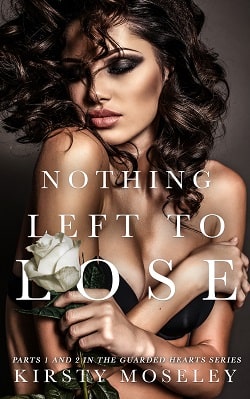Quickly, aware of the time crunch, I add Piaget diamond studs to each ear, the perfect understated size.
My makeup, too, is subtle. It’s the name of the game in our world. New money screams; old money whispers. When I’m done, I assess my work. I look fresh-faced and demure, but not really. My eyes will always remain upturned at the outside corners—siren eyes they’re called. My cheekbones will always cut. My lips are full no matter how much I wish otherwise, which is why I never wear lipstick shades that draw attention to them. Today, I use a balm called Enchanting Kiss by Charlotte Tilbury, a color that perfectly complements my skin tone.
The Herve Leger dress Margaret laid out for me earlier has a one-shoulder sleeveless neckline and an asymmetrical hem that falls just below one of my knees. My grandmother’s tailor has ensured it fits me like a glove. I like the dress; it’s beautiful. It was handpicked for me by my personal sales associate at Neimans, and Margaret has taken the time to lay out a coordinating pair of Tom Ford heels to go along with it. There’s a Cartier watch and an Hermès clutch as well.
Margaret and my grandmother go through my wardrobe once or twice a month, weeding out the bad apples: the clothes I’ve worn more than twice to a public event, a style that no longer suits me, a designer who is no longer in vogue. Then we make a trip to Neimans, or more often, our stylist just comes to us, accompanied with racks of garments. I haven’t lost touch with reality. I understand that for many people, these luxuries would seem spell-binding and intoxicating, or at the very least exciting, but a gilded cage is still a cage.
No.
I snap the lid on that thought, angry with myself for letting it fester for longer than usual. With haste, I add the Cartier watch to my wrist and pick up the clutch, repeating to myself how grateful I am for my life and everything I have until the words actually seem sincere.
There are dozens of private clubs in Boston, but only two of them truly matter, and my grandmother frequents both. The Somerset Club is the most exclusive, formed in 1826. Members are granted access only through legacy status. Legend has it that when a fire broke out in the 1940s, firemen were forced to use the service entrance to extinguish the blaze so as not to disturb the members who were dining in the front room. The Algonquin Club is new by the old guard’s standards, having only opened its doors in 1886. It hosts speaker series, member receptions, private dinners. Because it has slightly less stringent membership policies, in addition to presidents, heads of state, foreign dignitaries, and preeminent locals, I’ve seen my fair share of celebrities there. It’s where we’re headed tonight. Professor Rasmussen, an eminent botanist from the University of Copenhagen, is scheduled to deliver a lecture on orchids. My grandmother and I arrive early enough to have a drink in the lounge, and the room is crowded with faces I recognize right away. Names are drilled into my head, families of importance especially.
I’m sitting beside my grandmother, sipping a dirty martini. The conversation has turned to the Brahmins, which were to Boston as the Four Hundred were to New York City, prominent old families that seem to be forever on the lips of people in this room. Why talk about the present when you can dredge up the dead?
I keep quiet and listen, amused more than anything.
“She was absolutely abhorrent.”
“Who?”
“Isabella Gardner.”
“You all do realize that had John Lowell Gardner Jr. not given her entrée into Boston society, we would all be better for it, right?”
“Where was she from originally?”
I’m shocked they don’t already know the answer. I swear we’ve had this conversation a dozen times.
“She was a New Yorker whose father was considered the last of the East India merchants.”
“Why was she so bad?” someone asks.
My grandmother’s eyes practically bug out of her head. “She was a spectacle. An eccentric. She drank beer instead of tea, and there was a rumor that she used to walk down Tremont Street with a leashed lion.”
“Worse, she openly flouted the styles of the day.” My grandmother’s friend, Diana, chimes in. “She prided herself on wearing absolutely enormous diamonds. It was obscene.”
Short of the leashed lion—which just seems cruel—I like everything I know of Isabella Gardner. Flouting societal norms, paving her own way? She was brave.
“I enjoy her museum,” I say, speaking for the first time since the topic was broached.
Every gaze swivels to me as silence falls over the group.
What a feat—I’ve managed to steal everyone’s tongues.
In lieu of agreeing with me, they choose to stay mum and merely exchange glances, determining what the general consensus will be in response to my comment before they dare speak up, which just goes to show how annoyingly dull these people can be. It’s as if no one has a brain of their own. I’m not trying to defend Banksy’s contribution to contemporary art—though I would love to. I haven’t said anything controversial. The Isabella Stewart Gardner Museum is world-famous. It houses some of the finest paintings and sculptures in North America, featuring artists that range from Titian, Rembrandt, Michelangelo, and Botticelli to Manet, Degas, Whistler, and Sargent. For God’s sake, the very first Matisse to enter an American collection is there on display. To belittle its importance is juvenile and petty. It’s not as if Isabella can hear them chiding her. What does it matter now if we approve of her or not?











